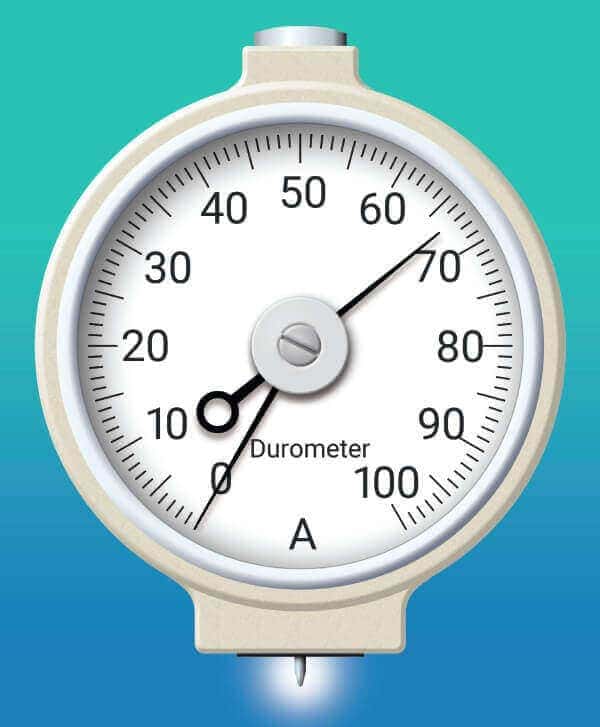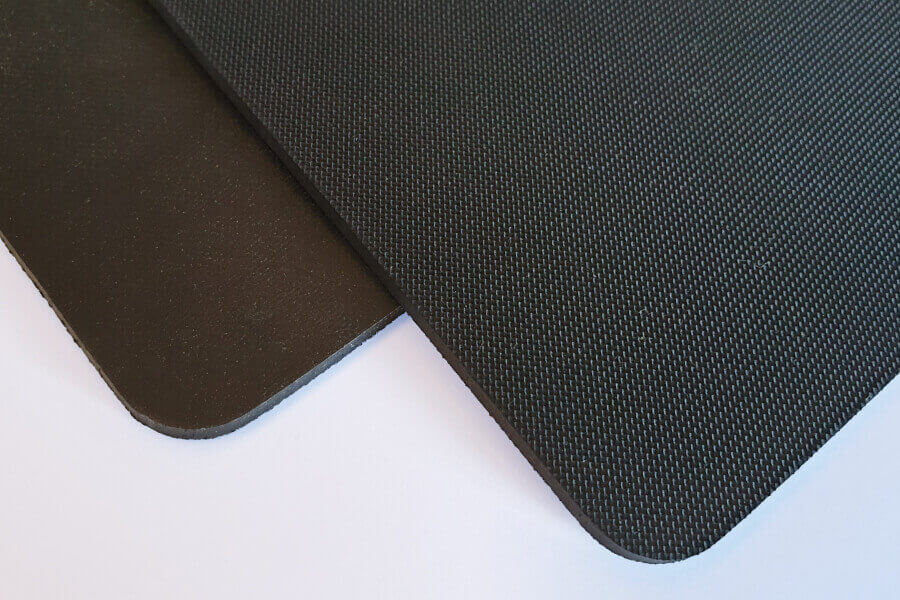
Shore (Durometer) Hardness is a measure of the resistance a material has to indentation.
Named after its inventor, Albert Ferdinand Shore, Shore hardness offers different scales for measuring the solidity of different materials. (Shore was born in 1876 and lived until 1936, creating the ‘Shore’ scale in the 1920s.)
There are different Shore Hardness scales for measuring the hardness of different materials, such as soft rubbers, rigid plastics and supersoft gels. These hardness scales were created so that everyone can discuss these materials and have a common point of reference for them.
Shore Hardness, using either the Shore A or Shore D scale, is the preferred method for rubbers and thermoplastic elastomers – and is also commonly used for ‘softer’ plastics such as polyolefins, fluoropolymers, and vinyls.
The Shore A scale is used for ‘softer’ rubbers while the Shore D scale is commonly used for ‘harder’ ones. There are other Shore hardness scales, such as Shore OO, O, B, C and H, but they are rare within the plastics and rubber industry. For example: 30 Shore A is much softer than 80 Shore A. Once a material reaches Shore 95 A, it will resemble a plastic over a flexible material regarding how it feels. In this instance, the Shore A and Shore D scales will briefly overlap. The latter relates to rigid materials whereas the A scale relates to bendable rubbers.
Shore hardness is measured with a device known as a Durometer, hence the term ‘Durometer hardness’. Hardness value is determined by the penetration of the Durometer indenter foot into the sample being tested.
The resilience of rubbers and plastics means that the indentation reading may change over time, so the indentation time is sometimes reported alongside the hardness number.
The results obtained from a Shore Durometer hardness test are a useful measure of the relative resistance to indentation of various grades of polymers. However, the test does not serve well to predict other properties, such as strength or resistance to scratches, abrasion, or wear, and should therefore not be relied upon solely for product design specifications.
Are there other methods of measuring rubber hardness?
Whilst we are majoring here on the Shore scale, it’s worth mentioning also the other main method called IRHD – the International Rubber Hardness Degree.
Various instrument types exist for both, but the Shore A and the IRHD Micro/Dead Load scales are the most commonly used for rubber. International standards describe both methods, these being ISO 48: 1994, Physical Testing of Rubber, Methods for the Determination of Hardness and ASTM 1415-88 (1994), Test Method for Rubber Property – International Hardness.
A comparison of the two methods can become very lengthy and detailed, but for those interested, take a look at this presentation paper ‘Understanding the IRHD and Shore Methods used in Rubber Hardness Testing’.
Rubber hardness examples and applications – A rated
| 25 - 35 Shore A | Rubber bands |
| 50 Shore A | Rubber stamps |
| 55 Shore A | Door seals and Pencil erasers |
| 60 Shore A | Windscreen wiper blades |
| 65 Shore A | Car tyres |
| 70 - 80 Shore A | Shoe sole & heels, leather belts |
| 75 - 80 Shore A | Soft wheels of roller skates & skateboards |
| 75 Shore A | Abrasive handling pads |
| 70 - 90 Shore A | Hydraulic O-rings |
| 80 Shore A | Leather belt |
| 85 Shore A | Tap washers |
| 90 Shore A | Phone cord |
| 95 Shore A | Fork lift truck solid tyres |
| 98 Shore A | Hard wheels of roller skates & skateboards |
| 100 Shore A | Ebonite rubber |

Some D rated examples
| 50 Shore D | Solid truck tyres |
| 75 Shore D | Hard hat (typically HDPE) |
| 80 Shore D | Cast urethane plastic |
| 60 Shore D | Golf balls |
| 80 Shore D | Computer tower casing |
Durometer hardness conversion
| Shore A | 30 | 35 | 40 | 45 | 50 | 55 | 60 | 65 | 70 | 75 | 80 | 85 | 90 | 95 | 100 |
| Shore D | 6 | 7 | 8 | 10 | 12 | 14 | 16 | 19 | 22 | 25 | 29 | 33 | 39 | 46 | 58 |
Scroll left and right to view full table details.

Need to know more? – just ask the experts here at J-Flex – call us on +44 (0)1777 712 400 or fill in our Ask the Experts form
You may also be interested in our White Papers – available to download here.





